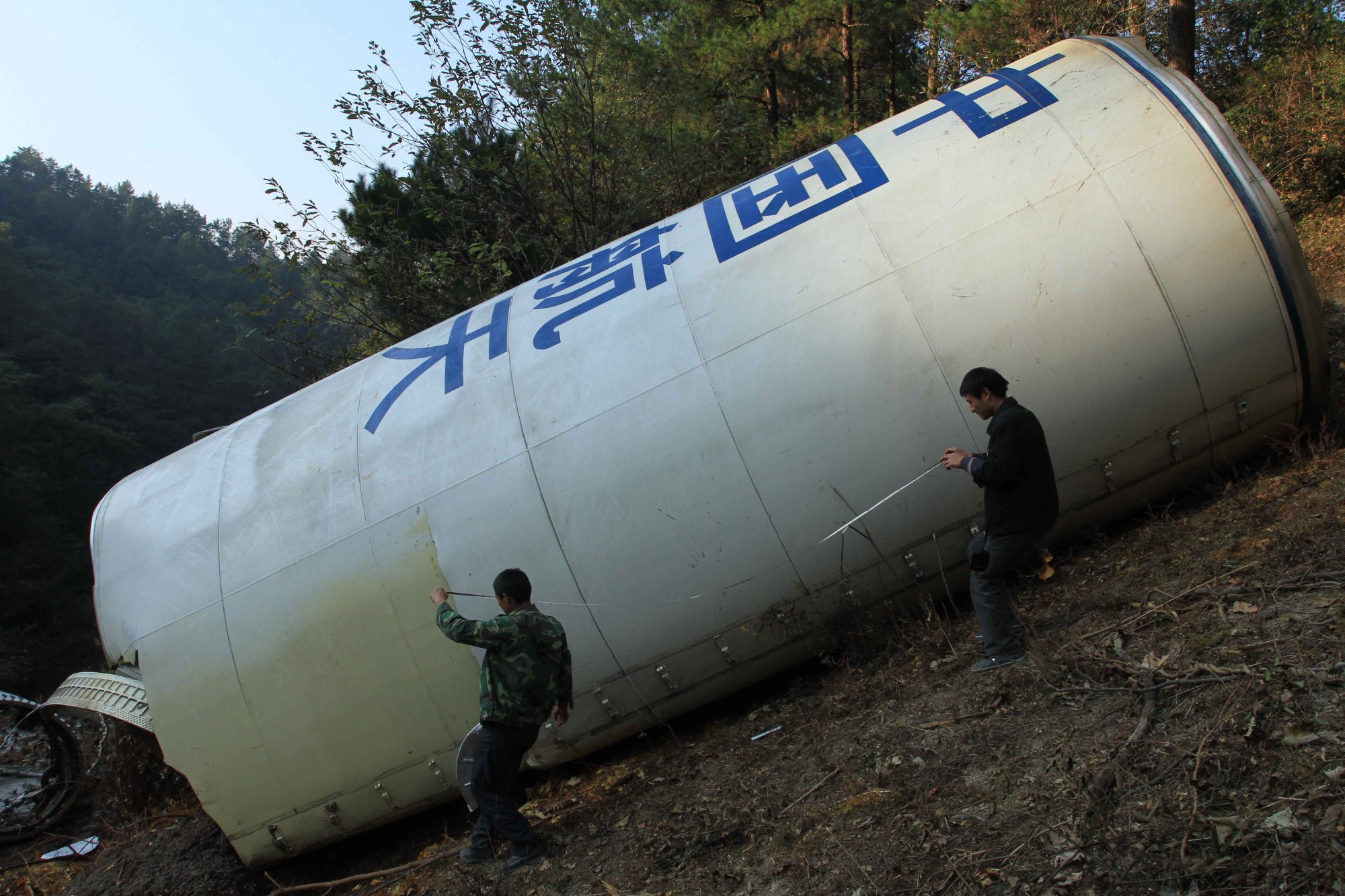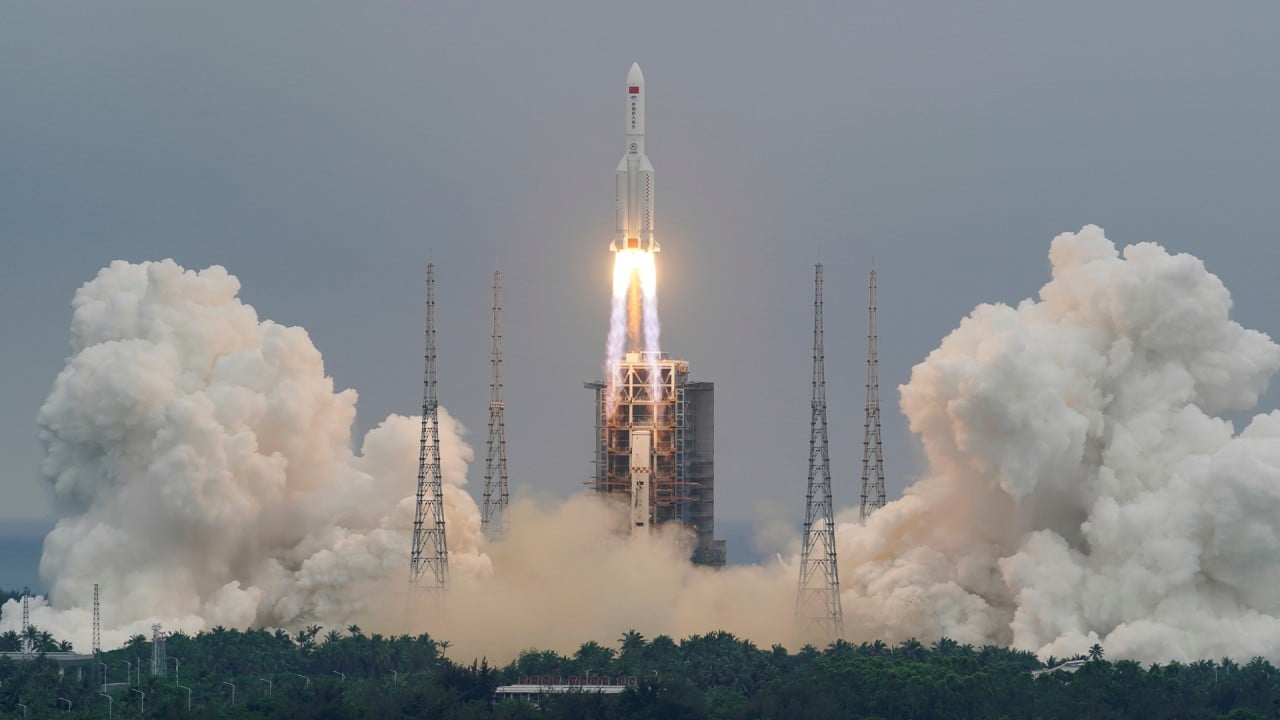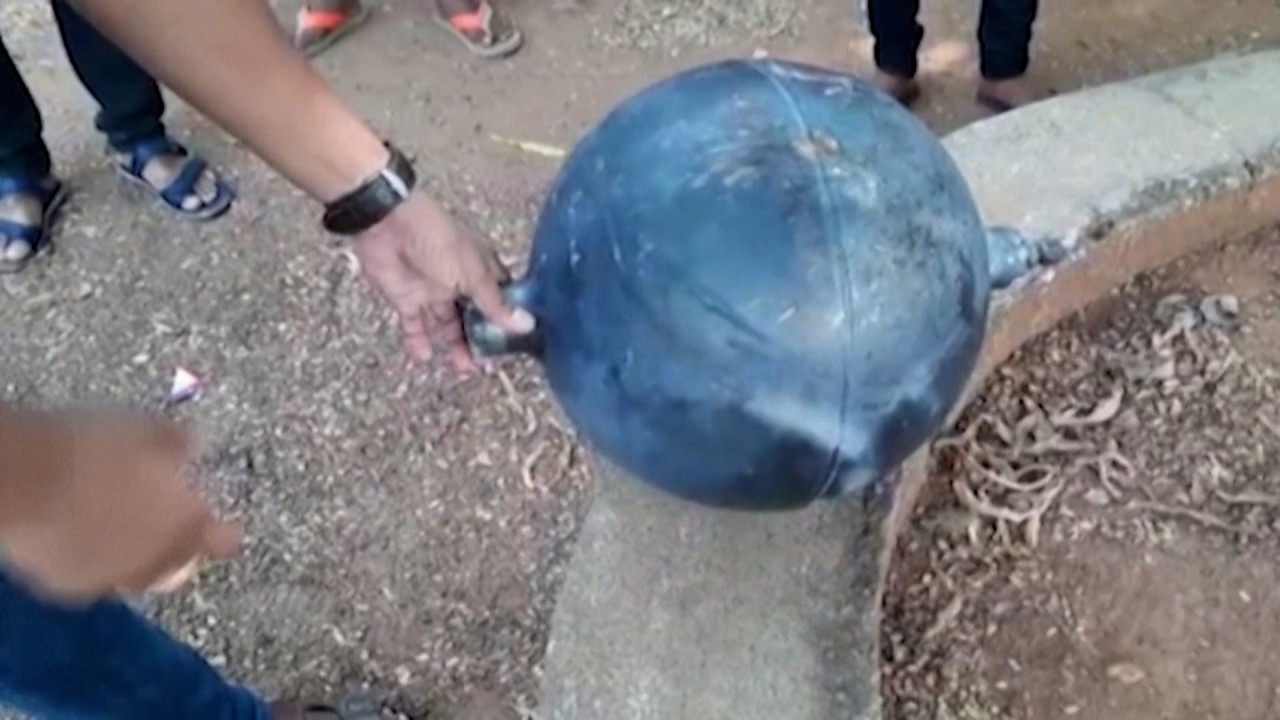
Should we worry about space debris from Chinese rockets hitting Earth?
- The recent launch of the Long March 5 rocket prompts concern about whether it will hit a city when coming back to Earth
- Harvard astrophysicist Jonathan McDowell estimates the probability of a rocket hitting a person after it falls to Earth is just one in a few billion
What happens to Long March 5 debris falling to Earth?
The debris has a mass of about 20 tonnes, including a substage rocket, instrument module, payload support and other components, according to Chen Shiqiang, a researcher with the China Academy of Launch Vehicle Technology in Beijing in a paper published in Aerospace China journal in August.
The structural components – including the hydrogen and oxygen storage tank, the first-stage inter-box section and instrument modules – account for about 77 per cent of the total mass. The engine makes up 15 per cent and the rest is electrical equipment, according to Chen.
Most of the structural parts and shells for electrical equipment are made from aluminium alloy, which will disintegrate and burn fully in the atmosphere during re-entry.
Composite materials and high-temperature alloys with non-combustible characteristics might not be completely burned up in the atmosphere. Therefore, some fairings, adiabatic pipelines and other small parts of wreckage would land on the Earth’s surface, he said.
Is there any risk to humans?
The chance of humans getting hurt is infinitely close to zero, according to calculations by some space scientists.
After a rocket breaks apart, most of it burns up in the atmosphere and only a few parts fall to the ground each year. So far, there have been no reports of people being injured.
According to Harvard astrophysicist Jonathan McDowell, the probability of a rocket hitting a person after it falls to Earth is just one in a few billion.
For comparison, during the time of a meteor shower about 1,000-20,000 meteorites fall to Earth every hour, and the probability of an ordinary person being hit by a meteorite greater than 200g is 1 in 700 million; the probability of an ordinary person being struck by lightning in his lifetime is 1 in 12,000.

What are the most recent space debris incidents?
There are many cases of spacecraft debris falling to the ground after re-entry. Nasa’s Upper Atmosphere Research Satellite, which was terminated in 2005, crashed into the Earth’s atmosphere on September 23, 2011, without human intervention and landed in Canada. There were no casualties reported.
Last year, the remains of the Falcon 9 second-stage rocket, which was supposed to use the remaining fuel to slow down and re-enter the atmosphere on March 4, drifted for 22 more days because of a failed ignition. It finally made an uncontrolled landing on a farm in Grant County, Washington, in the early hours of March 26, 2021. Again, no one was hurt in the incident.
Can we control the rocket’s fall and avoid debris?
There is currently no technology available to fully control the re-entry of rocket debris that has reached Earth’s orbit. There are two main reasons:
1. Changing the flight orbit is difficult and consumes extra fuel, which can cause a great loss in launch capability. The rocket in a near-Earth orbit launch mission generally flies in space at a speed of 7.9 kilometres per second, and it requires a lot of energy to change its fall direction.
2. The rocket debris will naturally disintegrate and burn up when it enters the atmosphere. A small amount of residual debris will fall to the ground, but because the probability of hitting any person is extremely low no additional treatment is deemed necessary.
Didn’t SpaceX rockets land perfectly?
For now, no launch platform can avoid generating rocket debris.
To save launch costs, SpaceX had the first stage of its Falcon 9 rocket land in a controlled manner on a mobile barge at sea, costing a 7-tonne reduction in launch capability. But a first-stage rocket is relatively low, both in terms of altitude and speed. It is several orders of magnitude more difficult and uneconomical to bring a second-stage rocket back from outside the atmosphere at a speed of Mach 23.
So, SpaceX officially announced as early as 2014 that it had abandoned its recycling plan for the second-stage rocket, replacing it with a “controlled fall” that would allow the second-stage rocket to re-enter the atmosphere as soon as possible and fall in a relatively remote sea area.
What has China done about the rocket debris issue?
In general, Chinese rockets adopt a passivation scheme. The Long March series rockets usually empty their remaining propellants, deflate their high-pressure cylinders and deplete their batteries after the engines are shut down, slowing the rocket and ensuring the second-stage rocket does not explode and generate debris in space.
China has also established a space debris monitoring and early warning mechanism, which can forecast and calculate the location of the rocket’s upper-stage debris and its possible landing point in a timely manner.
What will China do in future?
China is developing controlled fall technology for the first-stage rocket.
In 2019, for the first time, the Long March rocket adopted drop-zone safety control technology, called “grid rudder separator”, for precise control of the rocket’s first-stage drop.
The grid rudder is mounted on a substage of the rocket and folded tightly against the rocket body during lift-off. Once the rocket flies out of the atmosphere, a driving structure will release the rudder, as commanded by ground control, to adjust the steering positioning before landing.
The technology has proven effective, with the rocket’s debris found within a predetermined drop zone in northwestern Guizhou province soon after launch.
In 2020, for the first time researchers verified parachute-based drop-zone control technology with a booster on the Long March rocket. They installed multiple parachutes on one of the rocket’s boosters, and the parachutes deployed successively during the fall, successfully controlling the attitude and direction of the booster while falling.
Based on the location of the positioning system, the developers spotted the rocket debris within 25 minutes.
“This is the first time that China has achieved real-time reception, processing and display of debris information during a rocket launch mission”, said Qian Hang, a rocket designer from China Academy of Launch Vehicle Technology, in an official report.



